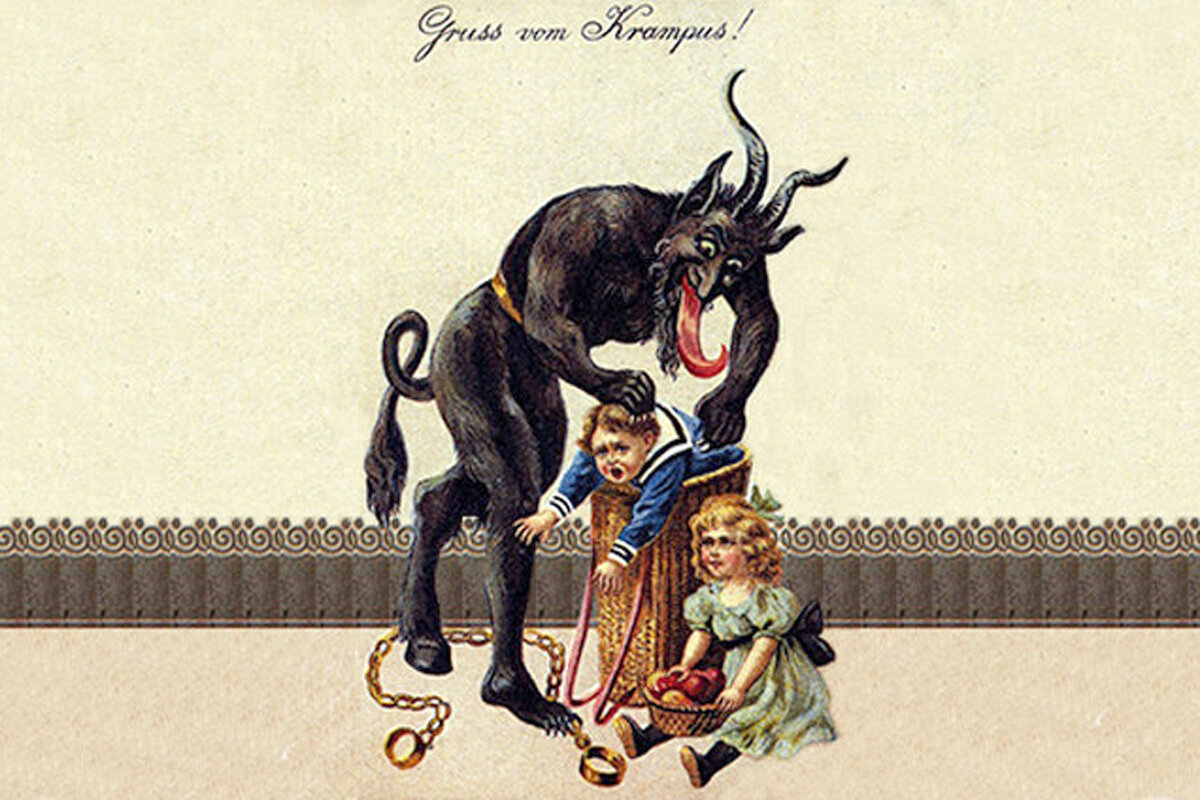Who is Krampus || Pagan Yule Traditions
Yule is right around the corner and I think it’s finally time we talk about Krampus. He’s one of my favorite monsters and his story provides some fascinating insights about the intersection of Christianity and Paganism.
Krampus is a half-goat, half-demon monster from central European Folklore. The name Krampus derives from the German word Krampen, which means “claw,” and most depictions of Krampus show him with big claws, sharp horns, and oddly long red tongue. Krampus is the devilish companion to St. Nicholas and they both arrive together on the evening of December 5, which is known as Krampusnacht. St. Nicholas rewards the nice children by leaving presents, and Krampus beats those who are naughty with birch branches and sticks. And in some stories it is said that Krampus eats the naughty children and takes them to hell.
So where did the legend of Krampus come from? Well, some believe that Krampus has Pagan origins and that he is the child of the Hel, the Norse Goddess of the underworld. Another theory is that Krampus is a representation of the horned God of Witches. In an article about Krampus published in 1958, Folklorist Maurice Bruce wrote:
“There seems to be little doubt as to his true identity for, in no other form is the full regalia of the Horned God of the Witches so well preserved. The birch – apart from its phallic significance – may have a connection with the initiation rites of certain witch-covens; rites which entailed binding and scourging as a form of mock-death.”
Regardless of which origin story is correct, we do know that the legend of Krampus became associated with the holiday of Christmas during the European conversion to Christianity. This was something that really annoyed the church and they tried to ban Krampus from Christmas celebrations. Though the church was definitely unsuccessful at this and I can see why. When it comes to holidays, the fun traditions are always the Pagan ones, so there isn’t much incentive for people to stop them.
It seems that Krampus is becoming more and more popular each year. In Bavaria, there’s been an artistic revival of making amazing hand-carved Krampus masks. These masks are often worn during the Krampuslauf, which is where people dress up as Krampus and parade through the streets and try to scare all the spectators. While the Krampuslauf is most popular in Germany and Austria, I could definitely see it becoming a thing here in America too.
One of the interesting things about Krampus is that many believe his expanding popularity was a reaction to the commercialization of Christmas. But now, it’s oddly become full circle and instead of a symbol against commercialization, Krampus himself, has unfortunately become pretty commercialized. It seems nothing is immune nowadays from commercialization. But as a Pagan, I love Krampus. I think his story is super fun and celebrating Krampusnacht can be a great way to honor Germanic pagan traditions. Additionally, Krampus is a great example of how Pagan folklore can break-through Christain oppression and continue to thrive in our modern day world.

